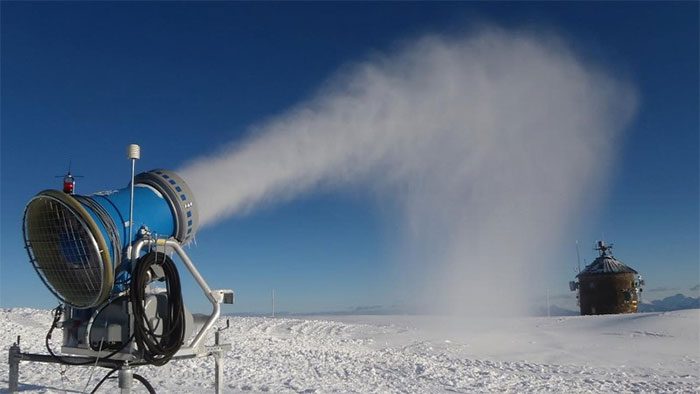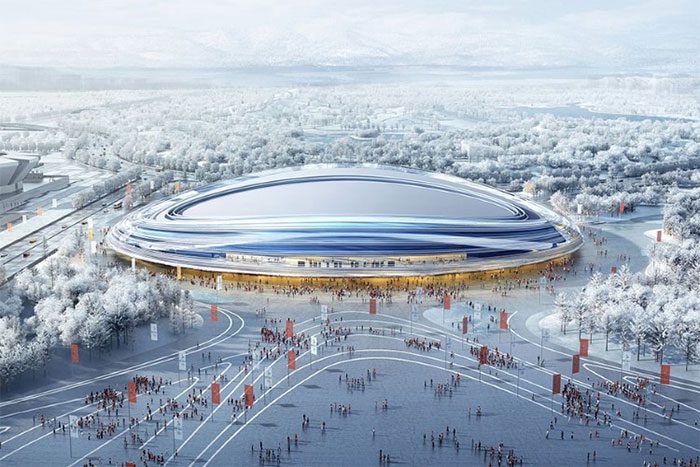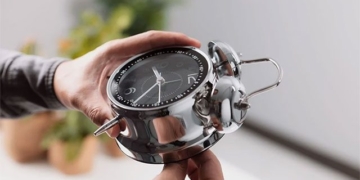While recreational skiers prefer natural snow for its soft and fluffy texture, competitive skiers opt for artificial snow to glide as fast as possible.
Artificial snow has gained increasing recognition with each Olympic Games.
The Difference
The Winter Olympics often conjure images of snow-covered mountains, ice rinks, and athletes in warm clothing amidst frigid weather. This is fitting, as the Winter Olympics are typically held in locations with average snowfall of 7.6 meters or more each year.

Artificial Snow Machine.
However, the venue chosen for the Beijing 2022 Olympics had virtually no natural snow. The climate there is relatively mild and pleasant. Therefore, China opted to use artificial snow.
Although both artificial and natural snow are frozen water, most skiers can recognize the differences between the two phenomena. Artificial snow uses high-pressure water, compressed air, and specialized nozzles to shoot tiny droplets of liquid into the air, which then freeze before they fall to the ground. However, creating snow is not simply about maintaining sufficiently cold air.
Pure water cannot freeze unless it is cooled to nearly -40 degrees Celsius. It can only freeze when mixed with extremely small ice nuclei, which act as a catalyst for ice crystal formation. Different nuclei can increase or decrease the freezing temperature depending on their specific molecular structure.
Two of the best ice nuclei are silver iodide and a type of protein produced by the bacterium Pseudomonas syringae. Most artificial snow systems add bacterial protein to the water to ensure that the water droplets freeze before hitting the ground.
In contrast, natural snow is the precipitation of ice crystals that form under Earth’s atmospheric pressure. As snow falls through the air, it gradually develops into the six-sided snowflakes we commonly see.
In comparison, human-made snow freezes quickly from just a droplet of water. As a result, artificial snow consists of billions of tiny ice pellets. To the naked eye, it may look like natural snow, but when touched, the “feel” of natural and artificial snow is quite different.
Due to the small ice pellets sticking together quite densely, some may not freeze before hitting the ground, making artificial snow often feel hard and icy. On the other hand, natural snow resembles a powder, providing skiers with a nearly weightless sensation as they glide down the slopes. This is largely due to the loosely stacked natural snow crystals, which contain 90-95% air trapped inside.
Skiers also have preferences for different types of snow depending on their personal goals. Racers wanting to glide as fast as possible utilize the sharp edges of the snow surface to make tight, powerful turns.
As a result, they prefer the denser, icier properties of artificial snow. In fact, ski competition organizers often add liquid water to natural snow trails to ensure it freezes and provides a durable, consistent surface for the racers.
Another point is that natural snow creates a dim light, low visibility, making skiing difficult. If natural snow falls heavily, ski races are often canceled. For instance, the Nagano Olympics in 1998 had to be canceled due to heavy snowfall. For racers, clear skies, cool climates, and artificial snow provide a completely different advantage.
Meanwhile, freestyle skiers prefer the soft surface of natural snow for safety reasons. Nordic skiers also appreciate natural snow because artificial snow poses greater risks in case of collisions. Similarly, recreational skiers also prefer natural snow as the snow crystals are filled with air, allowing them to glide smoothly.

Beijing Olympics Using Artificial Snow.
Artificial Snow Technology
For decades, scientists have been trying to create snow that closely resembles natural snow to meet the demands of the crowds. The first method is seeding natural clouds with silver iodide. The goal is to facilitate moisture in the clouds to turn into falling snow crystals. This process is known as Wegener-Bergeron-Findeisen, which theoretically can increase snowfall rates. However, in practice, the increase is relatively modest.
Another option, which does not require cloud seeding, is creating snow from snow machines. Scientists have been “growing” snowflakes in laboratories for decades, but this process is very complex.
Typically, researchers can only produce a few snowflakes at a time. Because ice crystals tend to grow slowly, researchers find it difficult to scale the process to the levels necessary to generate enough snow for skiing activities.
Another process is mimicking the natural crystal formation process through snow machines and using ice nuclei. To create artificial snow, Beijing focuses on four main factors: forecasting and assessing snow quality on slopes, creating arch-shaped ski trails for downhill skiing events, developing snow storage technology, and implementing smart snow-making systems.
Competition snow requires a higher density than recreational snow to meet the standards of the International Ski Federation (FIS) and ensure consistent and fair conditions for each competitor.
Creating artificial snow is often opposed due to its environmental impact. However, experts in Beijing state that making artificial snow is not an irreversible water resource-consuming activity. Instead, the water melted from the snow can be recycled into storage tanks.





















































